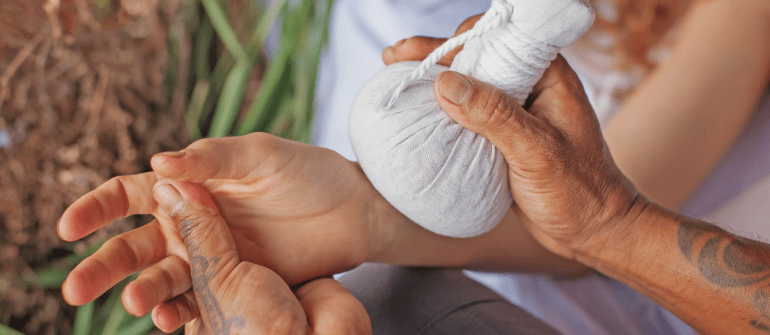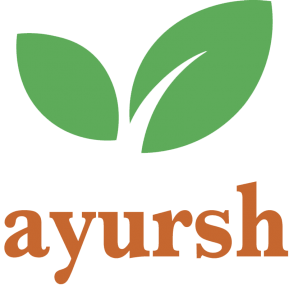Joint pain can slowly take away life’s simple comforts walking freely, stretching without stiffness, or waking up feeling light. For many people, arthritis becomes a lifelong challenge, and conventional treatments often focus only on symptom control.
Ayurveda offers a deeper approach. It views arthritis as a condition rooted in internal imbalance and toxin accumulation, addressing not just the pain but the cause behind it. Through Panchakarma, Ayurveda’s ancient detoxification therapy, the body is cleansed, the joints rejuvenated, and balance restored from within.
Understanding Arthritis Through the Ayurvedic Lens
In Ayurveda, arthritis is seen as a manifestation of systemic imbalance rather than merely a joint problem. The condition arises when toxins, known as Ama, accumulate in the body and obstruct the natural movement of Vata dosha. This leads to inflammation, swelling, and stiffness in the joints.
There are two common Ayurvedic interpretations of arthritis:
Aamavata (Rheumatoid Arthritis): Caused by the combination of Ama and aggravated Vata, leading to painful, inflamed, and stiff joints.
Sandhigata Vata (Osteoarthritis): Results from excess Vata and the depletion of lubricating fluids in the joints, causing cracking, dryness, and restricted movement.
By removing Ama and balancing Vata, Ayurveda aims to reduce inflammation and restore natural joint function.
Panchakarma: The Ayurvedic Art of Detoxification
The term Panchakarma means “five actions,” referring to a group of five cleansing procedures designed to eliminate deep-seated toxins and restore doshic balance. Unlike general detox methods, Panchakarma is a structured medical therapy supported by centuries of Ayurvedic practice.
The five classical Panchakarma therapies include:
Vamana (Therapeutic Emesis): Removes excess Kapha and respiratory toxins.
Virechana (Purgation Therapy): Cleanses Pitta and improves metabolism through liver and intestinal purification.
Basti (Medicated Enema Therapy): The most effective treatment for Vata disorders, including arthritis; it nourishes and lubricates the joints.
Nasya (Nasal Therapy): Eliminates toxins from the head and neck region.
Raktamokshana (Blood Detoxification): Purifies the blood and helps reduce inflammation in chronic pain conditions.
How Panchakarma Helps Relieve Arthritis Pain
Panchakarma therapies help the body heal by:
- Removing accumulated Ama that causes joint inflammation.
- Balancing Vata dosha to ease stiffness and dryness.
- Improving Agni (digestive fire) to prevent toxin recurrence.
- Enhancing blood circulation and oxygen delivery to tissues.
- Rejuvenating Dhatus (body tissues) for better joint strength and flexibility.
At Ayursh, each Panchakarma program is customized. Therapies like Abhyanga (herbal oil massage), Swedana (steam therapy), and Basti are carefully combined to support the body’s natural healing and restore comfort to affected joints.
Key Panchakarma Therapies for Arthritis
Abhyanga (Herbal Oil Massage): A warm oil massage that nourishes tissues, improves mobility, and reduces stiffness.
Swedana (Herbal Steam Therapy): A therapeutic steam bath that opens pores, softens tissues, and helps expel toxins.
Basti (Medicated Enema Therapy): The most effective therapy for Vata imbalance. It removes toxins through the colon, reduces pain, and enhances lubrication in joints.
Virechana (Purgation Therapy): Cleanses the liver and intestines, reducing inflammatory toxins and supporting digestion.
Lepana (Herbal Paste Application): A topical application of herbal paste that soothes inflammation and swelling in specific joints.
Each therapy is chosen based on an individual’s Prakriti (body constitution) and the severity of their condition.
Also, Read – Basti | Panchakarma Therapy
Panchakarma and Conventional Care
Conventional medicine often focuses on controlling symptoms such as pain and swelling. Panchakarma, on the other hand, works to correct the underlying imbalance that causes those symptoms. By detoxifying the body and balancing the doshas, Panchakarma provides a natural, long-term approach to managing arthritis.
At Ayursh, therapies are performed under expert Ayurvedic supervision using authentic oils and traditional methods. For many clients, combining Panchakarma with guided physiotherapy sessions at home accelerates recovery and improves flexibility.
Integrating Home-Based Care with Ayursh
Ayursh extends the benefits of Panchakarma and physiotherapy to your home. This approach allows comfort, consistency, and personal attention without the need to travel.
Home-based care includes:
- Gentle mobility exercises for joint strength.
- Warm oil therapies such as Abhyanga and localized Swedana.
- Diet and lifestyle guidance to prevent toxin build-up and recurrence of pain.
By merging Ayurveda with modern convenience, Ayursh ensures sustainable healing and renewed movement for every individual.
Preparing for Panchakarma and Aftercare
- Follow a light, easily digestible diet before and after therapy.
- Avoid cold, processed, and oily foods.
- Stay hydrated and rest well between sessions.
- Maintain gentle daily oil massages after treatment to preserve flexibility.
Consistency and patience are essential to experiencing the full benefits of Panchakarma.
Frequently Asked Questions
What is Panchakarma for arthritis pain?
It is a series of Ayurvedic detox therapies that remove toxins, balance Vata dosha, and ease joint stiffness and inflammation naturally.
Is Panchakarma a natural cure for arthritis?
Yes. By addressing the root cause of Ama accumulation and dosha imbalance, Panchakarma offers a natural, long-term solution for joint pain and stiffness.
How long does Panchakarma take to show results?
Some individuals feel relief after a few sessions, but a complete program may last from 7 to 21 days depending on the condition’s severity.
Can Panchakarma be done at home?
Preparatory therapies such as Abhyanga and Swedana can be performed at home under professional guidance. However, major detox procedures should be done under expert supervision.
Who should avoid Panchakarma?
People with fever, severe weakness, or during pregnancy should avoid Panchakarma until medically advised otherwise.
Conclusion
Panchakarma represents Ayurveda’s most profound healing system for chronic conditions like arthritis. By cleansing the body, balancing Vata, and rejuvenating tissues, it helps restore natural movement and comfort.
With Ayursh’s expert-guided Panchakarma and home-based therapy programs, you can experience authentic Ayurvedic healing designed for modern lifestyles, gentle, effective, and deeply restorative.
Suggested – Shirodhara: The Ayurvedic Way to Calm the Mind and Improve Sleep



